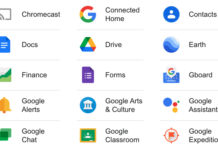
The newest version of Android was released in August, and is already active on a few devices. Here’s what you can expect from this latest release.
Unlike previous Android updates, this one isn’t loaded with new features you’ll notice right away. Google opted to tweak and refine instead of overhauling anything. Even so, some of these changes are useful and worth exploring.
As of this post, only the Pixel 2, Pixel 2 XL and Essential Phone are compatible with Android 9.0 Pie. Current Android phones, especially those launched in 2018, will get the update as well, except manufacturers and carriers determine when that happens.
New gesture navigation
 You won’t notice this by default because you have to turn it on in the settings. For years, Android has run on the navigation bar at the bottom for home, back and multitasking. Go to Settings>System>Gestures>Swipe up on home button and slide it on.
You won’t notice this by default because you have to turn it on in the settings. For years, Android has run on the navigation bar at the bottom for home, back and multitasking. Go to Settings>System>Gestures>Swipe up on home button and slide it on.
Basically, when you swipe up on any screen, it will take you back to the home screen. Swipe up when on the home screen and you get the recent apps multitasking screen. To fully close an app, swipe it up to get rid of it. Or you can hold on an app to get into split-screen view.
Swipe up on the home screen twice and you get the app drawer. Swipe right along the previous navigation bar towards the home button (that now looks like a small pill onscreen) and current open apps pop up, letting you easily switch between them.
Android has never truly worked this way, so it will take time to get used to it. Give it time, however, and you will find it smooth and intuitive. If not, you can always go back to the way it was.
Adaptive Battery and Brightness
 Previously, Google introduced Doze mode as a way to make batteries more efficient. When you weren’t using apps, Android would put them into a sleeping state that took less power from the system. Adaptive Battery takes this further by monitoring what apps you use, when you use them and for how long. Based on those parameters, it applies the battery-saving effect more acutely.
Previously, Google introduced Doze mode as a way to make batteries more efficient. When you weren’t using apps, Android would put them into a sleeping state that took less power from the system. Adaptive Battery takes this further by monitoring what apps you use, when you use them and for how long. Based on those parameters, it applies the battery-saving effect more acutely.
This feature is on by default, but you can toggle it manually by going to Settings>Battery>Adaptive Battery. You can also pretty much do the same with screen brightness. It’s one of the biggest reasons for battery drain, and the idea is to train the phone to automatically adjust it based on where you are or what apps you’re using.
For example, if you’re watching Netflix, and tend to turn down the brightness every time, the smarter feature should eventually just do it for you. I recommend training it on your own first by pulling down the notification pane from the top of the screen and changing it yourself first. Eventually, it will just do it.
App Actions
Did you know if you tap and hold on an app you get a pop-up menu of shortcuts? That feature was introduced last year, but now, you get actionable shortcuts in the app drawer, too. These will appear underneath the recent apps row at the top, and can include navigating to an address you looked up, or resuming a playlist you were listening to. They are largely based on what you do most often, so you should start seeing them routinely pop up.
A handful of Bluetooth
This feature didn’t get as much play (pun intended) when it was first unveiled in Android 8.0 Oreo, but it’s worth noting. Devices running on Oreo can pair with two Bluetooth speakers at once, creating a sort of ad hoc stereo situation when playing audio.
With 9.0 Pie, Google raises that to five devices. Now, you may not have five different Bluetooth speakers handing around, but it’s a unique way to set up a multiroom or surround sound layout. You just have to make sure you’re within range to communicate with them all. Bluetooth isn’t as steady as Wi-Fi.
If you get an incoming call, it will automatically go to any speaker with a microphone, and lower the volume, if necessary. You can also switch music to play on any one speaker you choose within the pairing list. So, if you’re moving from one room to another, and each have paired speakers, you can carry on the conversation with a simple tap.
But here’s the best part. Ever watched video using Bluetooth headphones that were out of sync? This version of Android will identify that and compensate for it through what is called “sound delay reporting.” That means any lag or sync delay will go straight to Google’s servers for alignment. The catch is that your headphones have to support sound delay reporting. If not, the feature won’t work.
Lockdown mode
 If you’re like me, and you like the idea of having a little extra security at your fingertips, this mode is worth a look. Google added a screenshot selection to the menu when holding down the power button. Lockdown takes that further, especially in cases where you’re concerned about privacy or safety.
If you’re like me, and you like the idea of having a little extra security at your fingertips, this mode is worth a look. Google added a screenshot selection to the menu when holding down the power button. Lockdown takes that further, especially in cases where you’re concerned about privacy or safety.
Go to Settings>Lock screen preferences>Show lockdown option and toggle it on. Now, when you press and hold the power button, Lockdown will also appear on the list. Tap that, and the phone will exit to the lock screen, hiding all notifications. Fingerprint and facial recognition sensors are ineffective at this time, too. The only way to get past the lock screen is using your PIN or pattern.
Extra security
On top of Lockdown mode, Google smartly addressed another privacy concern. The company says this Android version restricts access to the camera, microphone and all sensors (except GPS) to apps that aren’t active. In other words, if you’re not actively using an app right at that moment, there’s no way it can accidentally record anything.
Google Maps inside
Ever walked inside a big mall or convention centre and felt lost or unsure of your direction? Soon, Google Maps will use something called “Wi-Fi Round Trip Time” (RTT) to triangulate positioning through Wi-Fi access points inside.
Digital Wellbeing
This is not dissimilar to the Screen Time feature introduced in the latest version of iOS. The Android Dashboard will show the time you spend on your phone, including allocations for what apps stand out most. Setting time limits and blocking restrictions will be included to help users (or parents) better manage things. This feature is set to go live in the fall, so is not live as of this post.
Other features
A number of other tweaks were included that make real sense. If you have Auto-Rotate turned off, you can lock an orientation pressing a new button that appears onscreen. When you adjust volume, you are adjusting media playback volume first, not ringtone. When selecting text to copy and paste, a magnifier will show up to make that easier. Android 9.0 Pie is also better suited to phones that have notches at the top.
Overall, most of these are functional improvements, rather than dramatic usability upgrades. Aside from the new gesture navigation, you won’t always notice all of these features, but your phone will be better for them.
Check out the latest Android phones available now.



